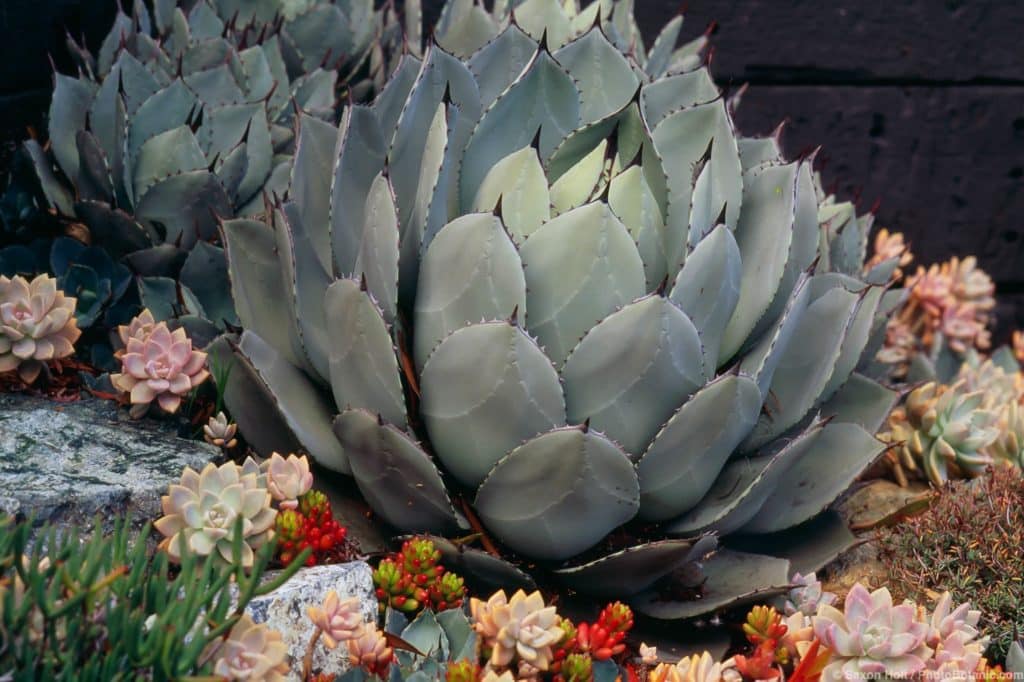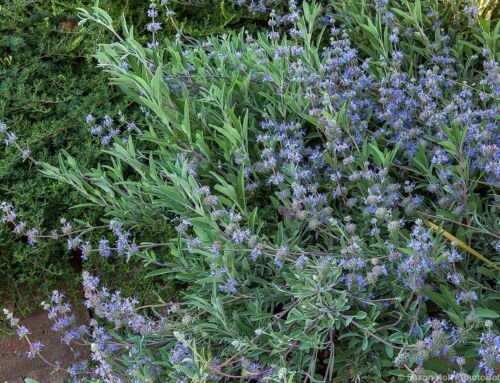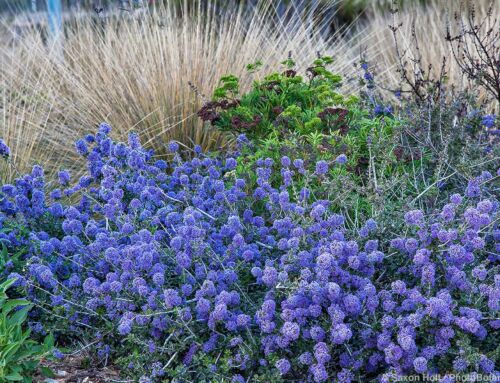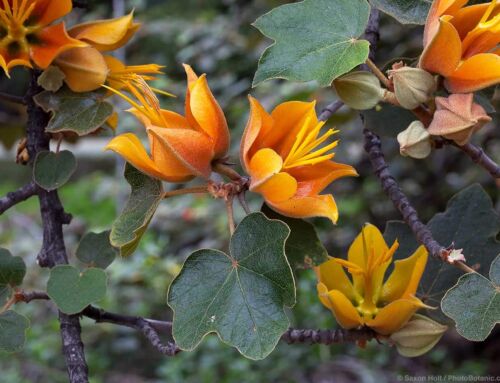
Agave parryi
Agave parryi is quite variable, some forms or varieties an ethereal blue-gray, others a silvery gray-green, some with leaves that are broad and rather blunt on top, others with narrower and more elongated leaves. But all are elegantly symmetrical, and all bear leaves with distinctive dark brown to maroon to almost black marginal teeth and an equally dark, viciously sharp terminal spine.
Agave parryi grows fairly slowly to about two to three feet tall and wide, and most spread by offshoots or “pups.” As the plant grows the leaves open from a tightly packed central core, and on the back of each leaf is the delicate tracery of overlapping leaves that spread out before it. Plants bloom only once and then die, reportedly after twenty years or so. Flowers are borne on a central stalk up to fifteen feet tall, and are vegetative magnets for hummingbirds.

Agave parryi leaf detail
I grew this agave many years ago in southern California, where it flourished and multiplied, reliably sending out offshoots until a fairly sizable colony had formed. From this colony I recently brought a few north to the San Francisco Bay Area, a quite different climate, but one that seems to have satisfied this adaptable succulent, at least so far. Agave parryi is native to high deserts of Arizona, New Mexico, and northern Mexico, so it should not be bothered by even our most prolonged winter frosts. To help them withstand our sometimes drenching winter rains, I set them out in large, shallow pots in commercial “cactus mix” for fast drainage.
Agave parryi is best planted where it will receive full sun a good portion of the day except in hot interior climates, where a bit of afternoon shade seems to be appreciated. This is a care-free plant, requiring no maintenance and little to no summer water once established. Plants will naturalize if given space and time.





Leave A Comment